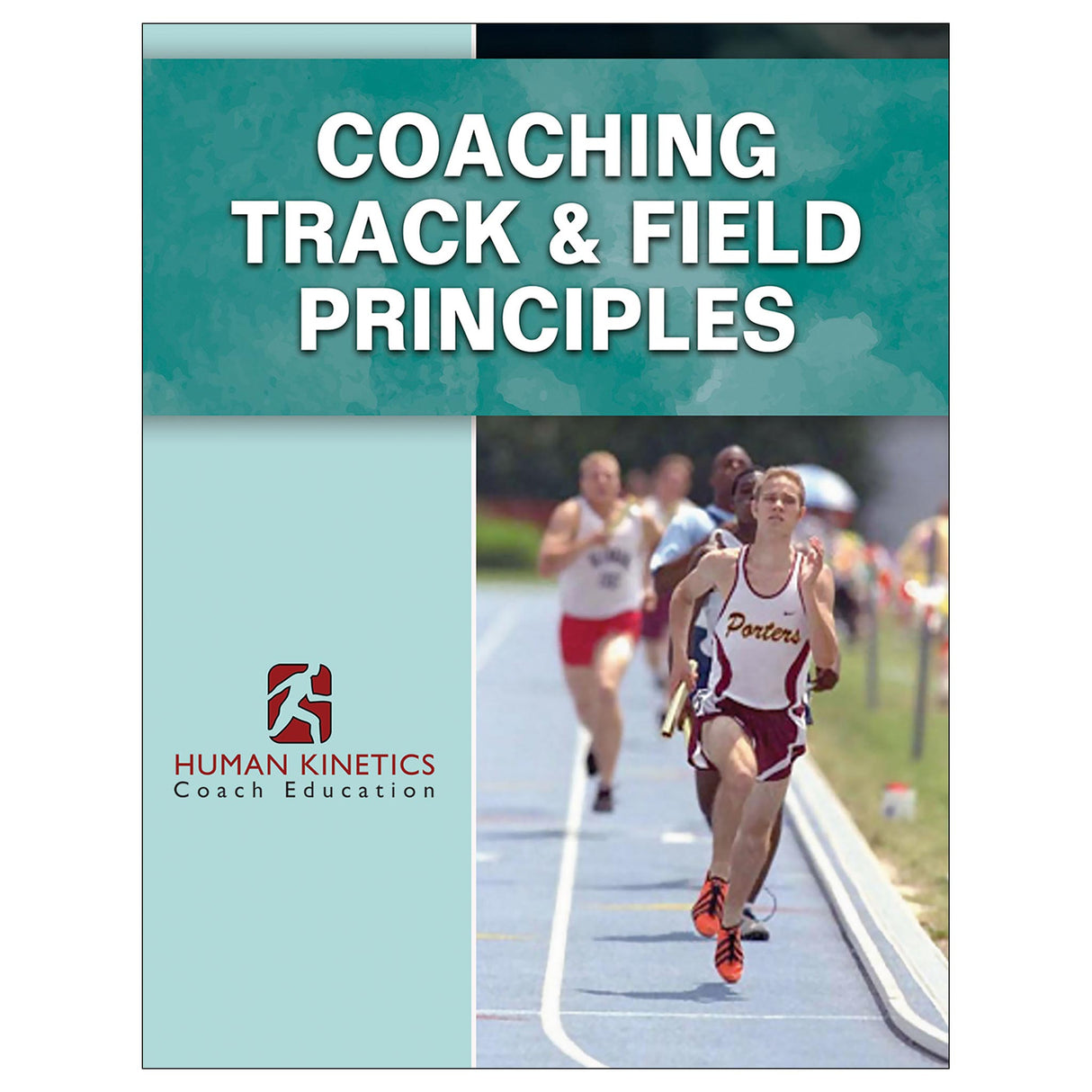Online Course
Coaching Track & Field Principles Online Course
Author: Coach Education
$49.95
Unit price
/
Unavailable
Online Course
$49.95 USD
$49.95 USD
Online Course
This package includes the following:
After completing the course units, you’ll take the 50-question test online. Upon successfully passing the test, you will be entered in the National Coaches Registry, an online listing of coaches who've completed Human Kinetics Coach Education courses. Sport administrators have access to the registry, allowing them to track coaches' course completion.
Learning Objectives
After completing this course, you will be able to do the following:
- Coaching Track & Field Successfully ebook
- Online Coaching Aids documents (PDFs)
- Online test
After completing the course units, you’ll take the 50-question test online. Upon successfully passing the test, you will be entered in the National Coaches Registry, an online listing of coaches who've completed Human Kinetics Coach Education courses. Sport administrators have access to the registry, allowing them to track coaches' course completion.
Learning Objectives
After completing this course, you will be able to do the following:
- Differentiate between technical and tactical skills
- Differentiate between the traditional and games approaches to coaching
- Explain the games approach strategies of shaping, focusing, and enhancing skills
- Identify technical, tactical, physical, mental, communication, and character development skills to teach
- Explain the elements of the tactical triangle
- Explain the purpose of formal and informal evaluation of your players’ performance
- Use evaluation tools to evaluate track and field skills
- Employ consistent, positive, and effective feedback when critiquing your athletes
- Recognize effective sprinting techniques
- Explain the factors that enable sprinters to start races effectively
- Design conditioning and training programs for sprinters
- Explain the techniques and tactics for sprint and sprint relay races
- Recognize effective high hurdle techniques for men and women
- Design conditioning and training programs for high hurdlers
- Recognize effective intermediate hurdle techniques for men and women
- Design conditioning and training programs for intermediate hurdlers
- Understand these training terms: intensity, duration, frequency, type of training, and approach
- Design conditioning and training programs for 800-meter runners
- Explain the techniques and tactics for 800-meter races
- Design conditioning and training programs for 1500- to 1600-meter runners
- Explain the techniques and tactics for 1500- to 1600-meter races
- Design conditioning and training programs for 3000- to 5000-meter runners
- Explain the techniques and tactics for 3000- to 5000-meter races
- Recognize effective high jump techniques
- Design conditioning and training programs for high jumpers
- Describe the characteristics of good pole vaulters
- Recognize effective pole vault techniques
- Describe factors to consider in selecting a pole
- Design conditioning and training programs for pole vaulters
- Explain safety considerations for pole vaulting
- Recognize effective long jump techniques
- Troubleshoot the long jump approach
- Recognize effective triple jump techniques
- Design conditioning and training programs for long jumpers and triple jumpers
- Recognize effective discus, hammer, shot-putting, and javelin throwing techniques
- Explain the instructional techniques of guidance, partial-task strategies, attentional cueing, and whole practice
- Design conditioning and training programs for throwing athletes
- Describe factors to consider when planning for a new season or for each practice
- Develop instructional plans for the season and for each practice
- Design conditioning and training programs for practices
- Describe effective approaches for communicating with your athletes, with school administration, other coaches, and parents
- Explain effective strategies for motivating your athletes
- Describe activities to complete to effectively prepare for meets
- Explain why the team manual and team expectations are effective tools for communicating with your team
- Describe approaches for motivating your athletes to do their best at practices and meets
- Describe some goals for pre-meet meetings and warm-ups
- Identify strategies for working more effectively with coaches, administrators, medical personnel, officials, parents, and the media
- Explain what’s involved in reading the situation during play
- Identify the knowledge your athletes need in order to make good tactical decisions
- Explain factors that influence tactical decision making
- Explain how to teach tactical skills
- List key activities to complete after the competition
Audience
High school coaches, serious club coaches, college and university undergraduate students, and advanced coaches at the youth level. Teaching Sport Skills
Evaluating Technical and Tactical Skills
Sprints and Sprint Relays
Hurdle Events
Middle-Distance and Distance Events
High Jump
Pole Vault
Long Jump and Triple Jump
Throwing Events (Discus Throw, Hammer Throw, Shot Put, and Javelin)
Season Plans
Practice Plans
Before and During the Competition
After the Competition
Practicum Exercises
Evaluating Technical and Tactical Skills
Sprints and Sprint Relays
Hurdle Events
Middle-Distance and Distance Events
High Jump
Pole Vault
Long Jump and Triple Jump
Throwing Events (Discus Throw, Hammer Throw, Shot Put, and Javelin)
Season Plans
Practice Plans
Before and During the Competition
After the Competition
Practicum Exercises



